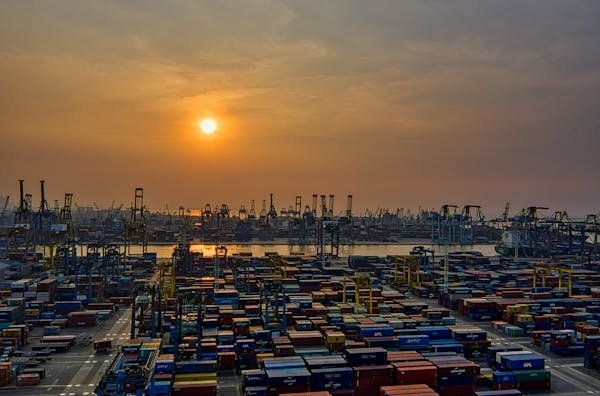The Automated Export System (AES) is a U.S. government platform facilitating the electronic submission of export information. It streamlines the process for businesses, ensuring regulatory compliance while enhancing data accuracy and security for global trade operations and reporting requirements.
Importance of understanding AES for businesses and exporters
Grasping the significance of AES is vital for businesses and exporters, as it ensures compliance with regulations, streamlines trade processes, minimizes delays at customs, enhances security measures, and promotes efficient data management for international transactions. Understanding aes us customs processes can further boost efficiency, helping businesses stay competitive in global markets.
History and Purpose of AES
Explanation of why the AES was created
The Advanced Encryption Standard (AES) was established to provide a secure and efficient encryption method for protecting sensitive information. It replaced the outdated Data Encryption Standard (DES), offering increased security and scalability for various applications in today’s digital landscape.
Description of its role in U.S. customs and international trade
The U.S. customs serves a vital function in overseeing international trade by regulating the import and export of goods, ensuring compliance with laws, collecting tariffs, preventing smuggling, and facilitating trade to maintain national security while promoting economic growth.
Understanding AES Data
Elements and codes of AES
AES, or Advanced Encryption Standard, comprises key elements like substitution boxes, permutation processes, and key expansion. It operates with fixed block sizes of 128 bits and supports various key lengths, ensuring robust security through layers of encoding and transformations.
The ITN and its significance
The International Treaty on Nanotechnology (ITN) plays a crucial role in promoting international cooperation and establishing global standards. It addresses ethical concerns, environmental impacts, and safety regulations, ensuring responsible development and application of nanotechnology for the benefit of society as a whole.
Description of the types of data collected by AES
The AES collects various data types, including demographic information, academic performance metrics, behavioral assessments, and survey responses. This diverse range allows for comprehensive analysis of educational outcomes and influences on student development within the academic environment across different populations.
AES Compliance
Legal requirements for exporters
Exporters must adhere to various legal mandates, including obtaining necessary licenses, complying with customs regulations, and understanding international trade laws. Additionally, they must ensure that products meet safety standards and documentation requirements for smooth cross-border transactions. Compliance is essential.
Understanding U.S. export regulations
Comprehending U.S. export regulations is essential for businesses engaged in international trade. These rules govern the shipment of goods and technology overseas, ensuring compliance with national security measures and trade policies while mitigating risks associated with unauthorized exports or violations.
The consequences for non-compliance
Non-compliance can lead to significant repercussions, including legal penalties, financial losses, and damage to reputation. Organizations may face increased scrutiny from regulatory bodies, loss of customer trust, and potential litigation, ultimately compromising their operational integrity and long-term viability.
How to Use AES
Step-by-step guide to using AES
This guide outlines how to implement Advanced Encryption Standard (AES) effectively. It provides detailed steps, from key generation and data preparation to the actual encryption process and decryption methods, ensuring a comprehensive understanding of AES for secure data handling.
Information on the AESDirect application
AESDirect is an online platform used for submitting Automated Export System filings. It simplifies export documentation, allowing users to report shipments electronically and efficiently. The application enhances accuracy, saves time, and helps ensure compliance with U.S. export regulations effectively.
Explanation of how AES integrates with other customs systems
AES seamlessly integrates with various customs systems by providing standardized data formats, ensuring efficient communication and processing. This collaboration enhances import-export workflows, allowing for accurate reporting, compliance checks, and improved cargo tracking while streamlining trade operations across multiple platforms globally.
Best practices for AES Compliance
Tips on how to avoid common errors
To prevent frequent mistakes, carefully review your work for clarity and accuracy. Organize tasks effectively, seek feedback from others, and break down complex projects into smaller parts. Regular practice and staying updated on best practices can also enhance performance significantly.
Advice for maintaining data accuracy
To ensure data accuracy, regularly validate information through audits and cross-checks. Implement consistent data entry procedures, train staff on best practices, use reliable tools for collection and storage, and encourage a culture of accountability regarding data management within your organization.
Strategies for efficient compliance and smoother customs process
Developing strategies for effective compliance can streamline the customs process. Key approaches include thorough documentation, regular staff training, staying updated on regulations, utilizing technology for tracking shipments, and fostering communication with customs authorities to facilitate smoother transactions and timely approvals.
Recent updates and Future of AES
Overview of recent upgrades and changes to AES
Recent upgrades and changes to AES have enhanced security protocols, improved performance efficiency, and streamlined user interfaces. These modifications aim to provide better encryption techniques, facilitate faster data processing, and ensure greater accessibility for users while maintaining robust protection against vulnerabilities.
The potential impact of new trade policies on AES compliance
New trade policies could significantly influence AES compliance, as they might alter reporting requirements and procedures. Businesses must adapt to these regulations, ensuring accurate data submission while navigating changing trade landscapes, which may lead to increased operational challenges and adjustments.
Forecasting future trends in automated export systems
Anticipating future developments in automated export systems involves analyzing technological advancements, regulatory changes, and market dynamics. By understanding these factors, businesses can adapt strategies that enhance efficiency, streamline processes, and ensure compliance while maintaining a competitive edge in global trade.
